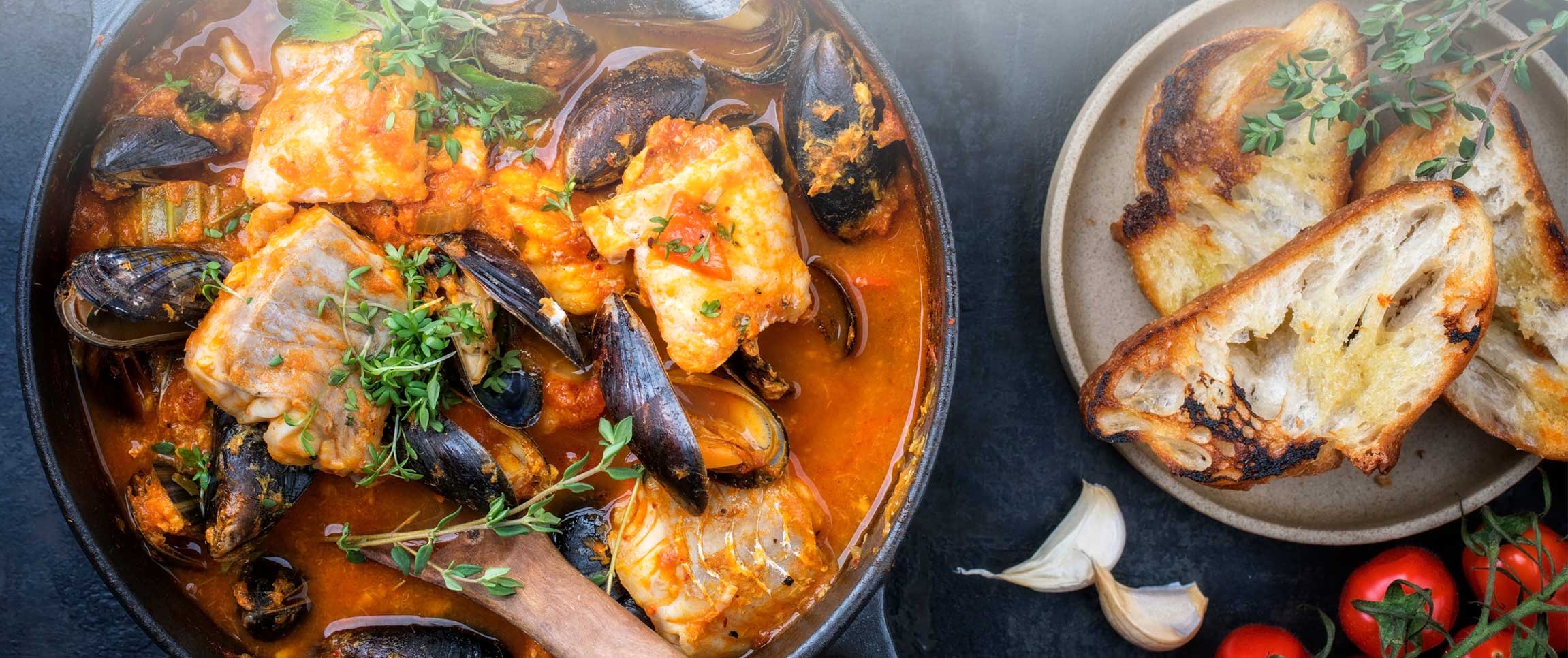Look at almost any menu and there’s likely to be at least one or two soups featured.
Chicken
Soup is a well-loved option and, besides being a comfort food, can be an endlessly fun exercise in different flavors and ingredients. With a little planning, soups can delight your diners and benefit your bottom line. Restaurants produce a staggering amount of waste. Much of that waste is dollars out the door with nothing to show for the expenditure.Chickens are a prime example. Buying whole chickens and breaking them down in house can produce a huge savings per pound over pre-portioned birds. However, they leave a healthy number of trimmings and parts like necks, backbones or wings that don’t always end up on plates.
The good news is those parts are seriously packed with flavors and can be the base for an amazing stock that can be used in all manner of soups and stews. Other parts sometimes left behind, like legs and thighs, help add meat to those dishes. Try roasting for chunk meat or slow braising for a pulled meat preparation like in a Brunswick Stew.
If you have healthy plates on your menu, you might be serving up some skinless chicken breasts for diners watching their waistline. Don’t toss that chicken skin! For people who aren’t watching that waistline, or those on the Keto diet, crispy chicken skin can make for a great appetizer or as a replacement for a crouton floating on top of the soup.
Beef
Buying larger pieces of beef and custom butchering in house, like chicken, can reduce your costs and provide you with exactly the cut your plates require. Beef trim can present you with a slightly different problem than chicken, with different parts varying wildly in fat content, texture and toughness. Here, braising can be your friend. Try slow cooking at a low temperature to intensify flavors and make even the toughest pieces beautifully delicate. Add in barley and cubed parsnip for the perfect cold weather soup.
With either beef or chicken, if you have a surfeit of bones and connective tissue, you can hit one of the hottest fads going: bone broth. This collagen rich broth is a little thicker and more viscous than broth but still packs a lot of flavor. Serve it simply like a hot cup of tea or even add it to your winter cocktail list. Some high-end eateries have added hot and savory bone broth tipples to their craft cocktail menus, mixing the steaming broth with fine whiskeys or delicate sherries.

 Seafood
Seafood
Topping the list of expensive food waste is seafood. The savings on buying whole fish can be immense but, again, you’re going to have waste. Fish heads, fins, cartilage, sometimes in not insignificant amounts. Toss it all into that stock pot. There is nothing quite as amazing as a delicate fish stock and it makes a great jumping off point for fish-based soups and chowders. Possibly the simplest, and visually stunning, would be a bourride. Add roasted garlic and fennel to your broth with a little saffron for color, then add in steamed mussels and clams. Consider adding a couple of prawns and chunks of a meaty white fish as well, then top with crispy slices of baguette slathered with a little garlic aioli.
Not enough fish to really make a batch of stock? No problem. Seal it up tight and pop in the freezer. You might not have enough from one weekend’s leftovers, but over the course of a month it will add up.
Vegetables
For any of these stocks, old and wilted vegetables are always a great addition to add complexity to the flavor, but so are vegetables that might be overly ripe or not quite aesthetically pleasing enough to put on a plate. Just because that carrot is grotesquely shaped or there’s a blemish on that potato doesn’t mean they are inedible. Once nicely diced and blemish removed, you can save those vegetables from the compost.
Finally, what to do if you’re generating more usable waste than you can possibly use in soups and stocks? Make it into soups anyway. Partner with food kitchens, homeless shelters, or any other charity that distributes and serves food. You’ll be able to write off the food and labor costs, plus the partnership might serve to be better than any advertising dollars you’ve ever spent.



